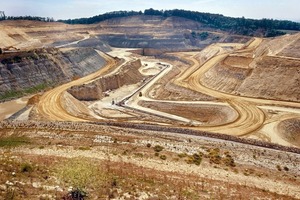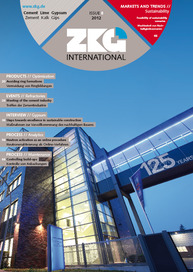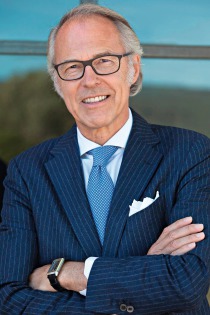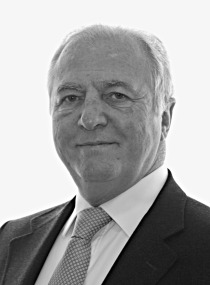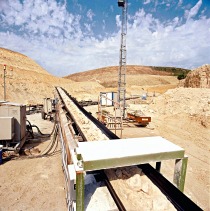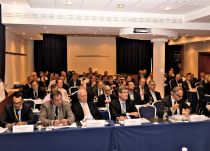Bernard Lekien has been the president of the European Gypsum Association since 2010. On the 29th Eurogypsum Congress in Kraków/Poland on May 10th/11th 2012, his tenure ended and Maurizio Casalini was announced the new president. ZKG had the opportunity to ask Bernard Lekien about the developments of the European gypsum industry.
ZKG: Mr. Bernard Lekien, what are currently the most important topics the European gypsum industry is dealing with?
Bernard Lekien: The two currently most important topics that Eurogypsum is dealing with are the Emissions trading scheme (ETS) including the exposure to carbon leakage risks, and the recycling of gypsum demolition waste. As you know, the European gypsum industry is known as a green industry and covers the whole life cycle of the product. Gypsum provides a uniquely positive answer to complex environmental equations of this century; be it in relation to the sourcing of raw materials, to the use of gypsum products in buildings and to their recycling at the end of their useful life. Gypsum further provides safe, low cost, comfortable and convenient solutions for the built environment. In the field of the ETS, we have done everything possible in terms of implementation of green technologies to reduce our CO2 emissions. The industry will be covered by the ETS scheme in phase 3, i.e. starting January 1st, 2013. According to the benchmark exercise carried out by Ecofys in 2010, the ETS means costs of 7.3 million € in 2013 and further costs of 9.8 million € in 2014 for the 59 European plants covered by the scheme. For the time being, the industry is not considered as exposed to carbon leakage.
We face the paradox that some of our competitors (like bricks, laminated board, plywood) obtained this status of carbon leakage and received 100 % free allocation on the basis of their benchmark without decrease over time, while in terms of CO2 emissions per square meter, we have a better carbon footprint than most of them. We are thus considering whether we are exposed to carbon leakage risks and we have provided the Commission with a qualitative assessment of our case. We hope that this assessment will lead to inclusion in the carbon leakage list of 2013.
ZKG: What about the recycling of gypsum demolition waste?
Bernard Lekien: In July 2011, Eurogypsum submitted to the LIFE+ programme a project entitled: “From cradle to cradle: a circular economy for the European gypsum industry with the demolition and recycling industry”. We asked for a co-funding of 50 % of the total project costs that are 1.7 million € for a total budget of 3.7 million €. The project focuses on the deconstruction of five construction sites, the reprocessing of gypsum demolition waste by reprocessors and the reincorporation of the processed gypsum waste in the manufacturing process which will pose technical challenges. The project consists of 17 partners. Among these, we have demolition companies, reprocessors, gypsum companies, two universities and one laboratory. At the end of March 2012, the Commission asked for clarification on the project which is a good sign for future co-financing. The Commission will make its final decision in July 2012. This project is very important for our idustry as we are not currently recycling contaminated waste and through this project, we also wish to establish the end-of-waste criteria of gypsum waste - when waste ceases to be a waste and becomes a product.
ZKG: Can you tell us something about differences in the domestic gypsum production in different European countries? Are there different demands/individual requirements depending on the country?
Bernard Lekien: The main demand is to provide solutions for a healthy construction environment with technical economical systems. Moreover, to achieve a low carbon economy, we need to boost energy-efficient solutions for renovating the current building stock. The European gypsum industry has developed innovative, technological and energy-efficient solutions for building interiors, with a complete offering for walls, floors and ceilings. In addition to the essential contribution to thermal insulation and energy efficiency, gypsum-based solutions provide other key benefits in terms of safety and comfort. It is worth noting that in the case of refurbishment, internal insulation often represents the sole option to increase the energy efficiency of the building. Therefore, Eurogypsum has drafted a brochure with ten case studies for new buildings and renovations to share and transfer our knowledge and achievements for a spread of the internal insulation techniques all over Europe with the objective of making internal insulation happen when and where it makes sense. The European gypsum industry is convinced that internal insulation techniques are an integrated part of the solutions package for reaching a low carbon economy and green growth.
ZKG: What plans, intentions or changes in the European gypsum industry that you have developed in your office, will you pass on to your successor?
Bernard Lekien: During my presidency I have strengthened the working methods of our association so that we can work effectively on all the subjects that the industry needs to cover (from extraction to recycling and renaturation). Therefore, I have established key strategic priorities.
1. �Re-establishing a competitive level playing for gypsum products within the ETS. The gypsum sector is not yet classified as carbon leakage and this creates a market distortion with our direct competitors. This will be an ongoing subject.
2. Recycling of gypsum C&D waste.
3. �Promoting techniques for interior insulation for new buildings and refurbishments, thereby contributing to a low carbon economy.
4. �Strengthen the credentials of FGD Gypsum by requesting the commission for the staus of a by-product.
5. �Establishing a strategy to have easier access to resources in Europe and thereby focusing on renaturation of quarries and enhancing biodiversity improvements in our quarries.
6. �Setting up the European Parliament Gypsum Forum to strengthen the shift towards sustainable construction.
7. �Enhancing the visibility of Eurogypsum with a new website in 2011.
Another subject that we are starting to tackle and which my successor will certainly take on board is indoor air quality in energy efficient buildings which are too airtight and earthquake safety for non-load bearing elements in a building.
ZKG: Mr. Lekien, thank you for the interview.

